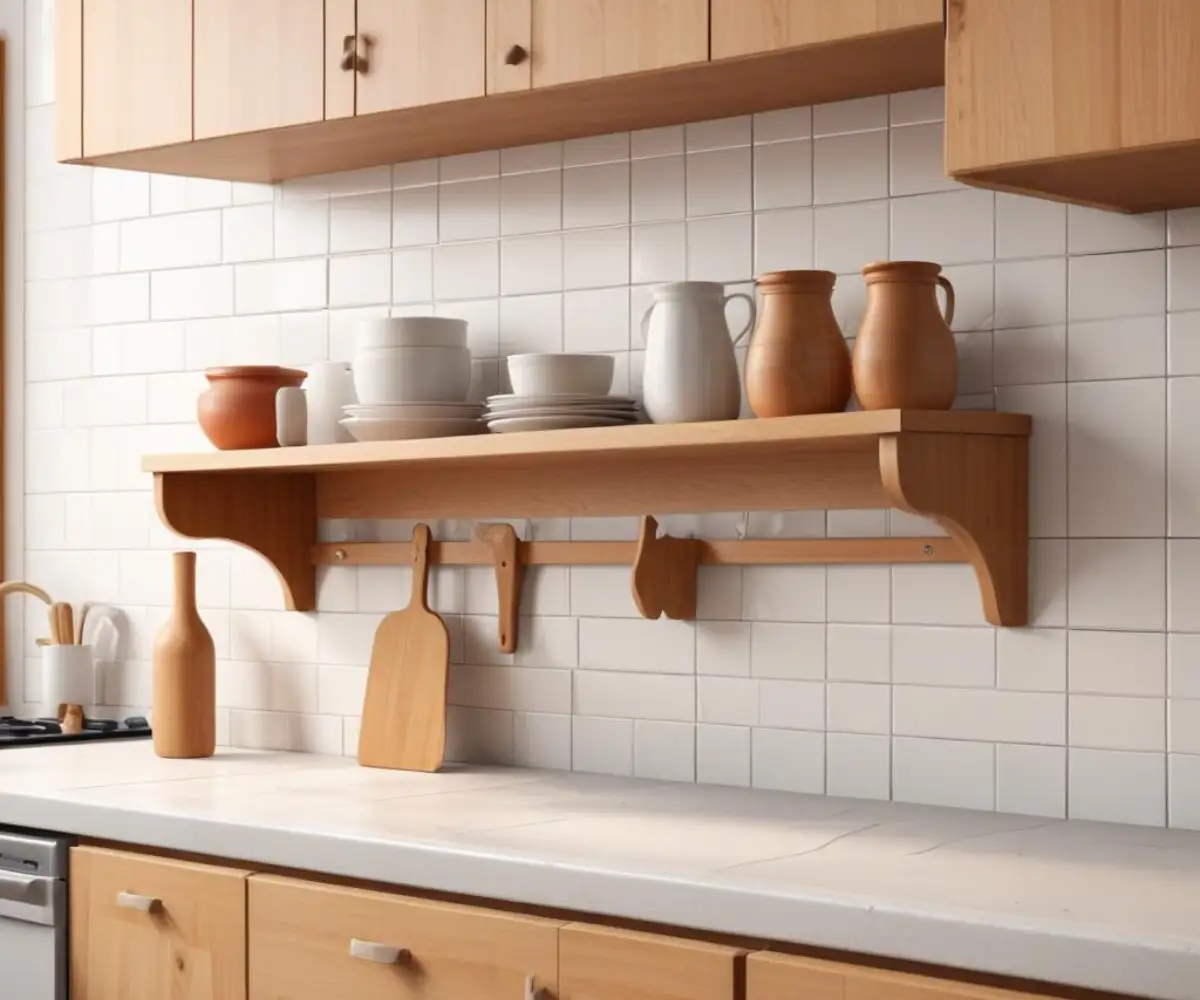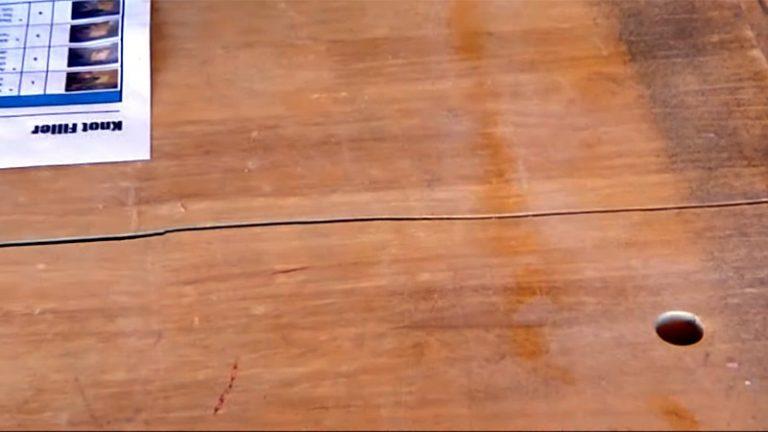Kitchen Shelves Collapsing? Stop the Sag for Good
It’s a sound every homeowner dreads: the sudden, startling crash from the kitchen. You rush in to find a cascade of plates, glasses, and canned goods scattered across the floor. Your kitchen cabinet shelves keep falling, and it’s more than just an annoyance—it’s a hazard.
This frustrating and common problem can leave you feeling helpless. Fortunately, you can fix it permanently. By understanding the root causes and implementing the right solutions, you can ensure your shelves remain stable and secure for years to come.
You'll Learn About
Why Your Kitchen Cabinet Shelves Keep Falling: The Hidden Culprits
Before you can implement a lasting fix, it’s crucial to diagnose why your shelves are failing. The issue often boils down to a few key factors working against your cabinetry day after day. Ignoring these root causes is like putting a bandage on a deep wound—it won’t hold for long.
The Overloading Epidemic: More Weight Than They Can Bear
The most common reason for shelf failure is simply asking them to hold too much. Many standard kitchen cabinets, especially those made from particle board or MDF, have surprisingly low weight limits. Stacks of heavy ceramic dishes, canned goods, and small appliances can easily exceed what the shelf was designed to handle.
Over time, this constant pressure leads to the tell-tale “smile” of a sagging shelf, putting immense strain on the tiny pins holding it up. This is the first sign of an impending collapse.
Particle Board Problems: The Unseen Enemy of Shelf Stability
Particle board is a budget-friendly material common in modern cabinetry, but it’s notoriously prone to bending and degradation. This material is essentially wood particles held together with adhesive. When exposed to the humidity and temperature fluctuations of a kitchen, it can weaken significantly.
As the particle board sags, it changes the geometry of the support system. The shelf puts outward pressure on the support pins, causing the holes they sit in to become enlarged or elongated. Eventually, the pins no longer have a secure grip and can slip out, leading to shelf failure.
The Wrong Hardware: Are Your Shelf Pins The Problem?
Sometimes the shelf itself isn’t the issue, but rather the small plastic or metal pins supporting it. Many cabinets come with basic, low-profile pins that are inadequate for heavy loads. Plastic pins can become brittle and snap, while thin metal pins can bend under pressure.
If the pins are too short or the shelf was cut slightly too narrow, any shift in weight can cause one side of the shelf to slip off its support. This is a frequent issue in lower cabinets where items are often slid in and out.
Humidity and Heat: The Silent Shelf Killers
Your kitchen is a high-humidity environment. Steam from cooking, boiling water, and your dishwasher all introduce moisture into the air. Materials like MDF and particle board absorb this moisture, causing them to swell and lose their structural integrity.
This process weakens the material from the inside out, making it soft and pliable. The shelf begins to sag, and the pin holes lose their crisp, supportive shape, creating a recipe for disaster.
The Ultimate Fix: How to Permanently Stop Your Cabinet Shelves from Falling
Now that you understand the causes, you can move forward with a solution that addresses the root of the problem. These steps will guide you through creating a robust and permanent shelving system that you can trust.
Step 1: Empty and Assess the Damage
First, remove everything from the failing shelf and the shelves around it. This gives you a clear view to properly inspect the cabinet. Look closely at the shelf itself—is it visibly bowed? Check the pin holes. Are they round and crisp, or are they elongated, chipped, or stripped?
Also, inspect the shelf pins. Are they bent, or do they fit loosely in the holes? A thorough diagnosis is what separates a long-term fix from a temporary patch you’ll have to deal with again later.
Step 2: Reinforce or Replace the Shelves
If your shelf is sagging, simply flipping it over is only a temporary fix. For a permanent solution, you need to either reinforce it or replace it with a stronger material. The best option depends on your budget and the severity of the sag.
To reinforce an existing shelf, you can add a stiffener. A 1×2 strip of solid wood or a metal flat bar secured along the front and back edges can dramatically increase its rigidity. For the strongest bond, apply wood glue along the edge and then clamp the support strip tightly while you secure it with screws, ensuring you force the bow out of the shelf.
For a truly durable upgrade, replace the particle board shelf entirely. Solid wood or ¾-inch cabinet-grade plywood are far superior choices. They are significantly stronger and more resistant to humidity. When purchasing new material, consider using stronger options like thicker lumber to guarantee long-term stability.
Step 3: Repair Damaged Shelf Pin Holes (The Critical Step)
A strong shelf is useless if the pin holes can’t support it. Enlarged or stripped holes are a primary point of failure. You can repair them by drilling out the damaged hole, gluing in a small wooden dowel, and then drilling a new, correctly sized pilot hole once the glue has cured.
Another quick fix for a slightly loose pin is to insert a piece of a toothpick into the hole alongside the pin to create a tighter fit. However, for a truly permanent solution that bypasses this problem entirely, consider upgrading your support hardware.
Step 4: Choose the Right Support Hardware
Ditch the flimsy plastic pins. Upgrading to high-quality metal supports is one of the most effective changes you can make. There are several styles to choose from, each with its own advantages.
L-shaped brackets and spoon-style pins offer a larger contact area with the bottom of the shelf, providing better stability. For the ultimate in strength and adjustability, however, nothing beats a metal track system.
| Support Type | Material | Load Capacity | Best For | Pros | Cons |
|---|---|---|---|---|---|
| Standard Pin | Plastic or Metal | Low to Moderate | Light items, decorative displays | Inexpensive, easy to install | Can bend or break, small support area |
| Spoon-Style Pin | Metal | Moderate to High | Dishes, pantry items | Wide, flat support surface prevents wobbling | Slightly more expensive than standard pins |
| L-Shaped Bracket | Metal | High | Heavy dishes, small appliances | Excellent stability, prevents shelf tipping | More visible, requires precise placement |
| Metal Shelf Standards | Steel or Aluminum | Very High | Heavy pantry storage, garage cabinets | Fully adjustable, distributes weight along a track | Requires more installation work |
The Metal Standard Solution: A Permanent Upgrade for Heavy Loads
For cabinets that will hold significant weight, installing metal shelf standards is the definitive solution. These are slotted vertical tracks that you screw onto the inside walls of your cabinet. Metal clips then lock into these tracks to support the shelf.
This system completely bypasses the weakness of individual pin holes. The weight is distributed along the entire track, which is securely fastened to the cabinet wall. It provides superior strength and fine-tuned adjustability, ensuring your shelves will never collapse again.

Proactive Prevention: Ensuring Your Shelves Never Fall Again
Once you’ve implemented a permanent fix, a few good habits can help prevent future issues throughout your kitchen. A little proactive care goes a long way in maintaining the structural integrity of your cabinets.
Master Weight Distribution
Be mindful of how you load your shelves. Always place heavier items closer to the sides of the shelf, directly above the supports. Lighter items should be placed in the middle. This simple practice minimizes the stress on the center of the shelf, which is the most common point of sagging.
Avoid stacking too many heavy plates in one tower. Spreading them out across the shelf distributes the load more evenly.
Control Your Kitchen’s Climate
You can’t eliminate humidity in the kitchen, but you can manage it. Always use your range hood exhaust fan when cooking to pull steam and moisture out of the air. If you have a spill inside a cabinet, wipe it up immediately to prevent moisture from seeping into the particle board.
These small actions help protect your cabinets from the inside out, preserving the material and preventing the slow degradation that leads to failure.
Regular Inspections: The 5-Minute Check-Up
Once a year, take a few minutes to quickly inspect your cabinet shelves, especially those holding heavy items. Look for any early signs of bowing or sagging. Gently wiggle the shelves to check for loose pins. Catching a problem early is much easier than dealing with a full-blown collapse.
When the Whole Cabinet is the Problem
Sometimes, falling shelves can be a symptom of a much larger issue. If the cabinet box itself is pulling away from the wall, the internal shelves are the least of your worries. Look for gaps between the back of the cabinet and the wall, or doors that no longer align properly.
These are serious warning signs that the entire unit could be at risk of detaching. If you see these signs, it’s critical to act immediately. You may need to understand the emergency steps for a cabinet falling off the wall to prevent a major kitchen catastrophe and potential injury.
Dealing with collapsing cabinet shelves is a frustrating experience, but it is entirely solvable. By correctly identifying the cause, upgrading your materials and hardware, and adopting preventative habits, you can build a storage system that is strong, reliable, and secure. A stable shelf provides not just storage, but also peace of mind.

